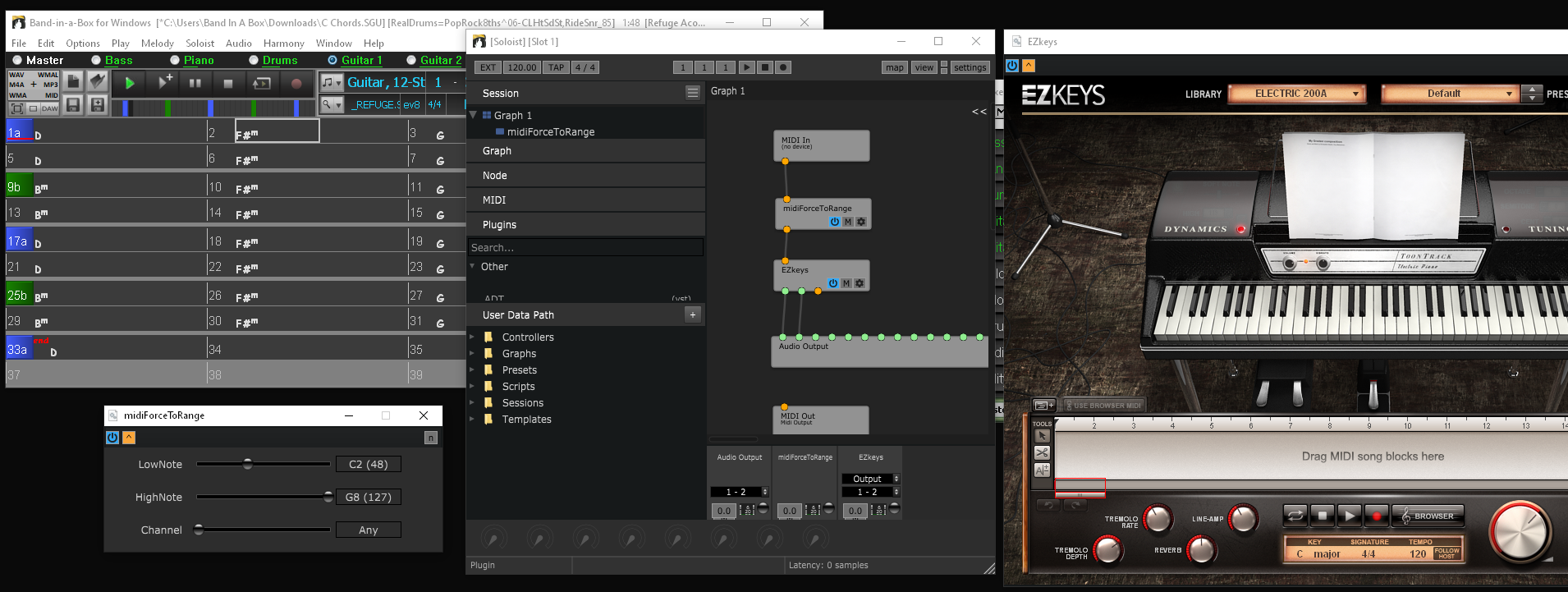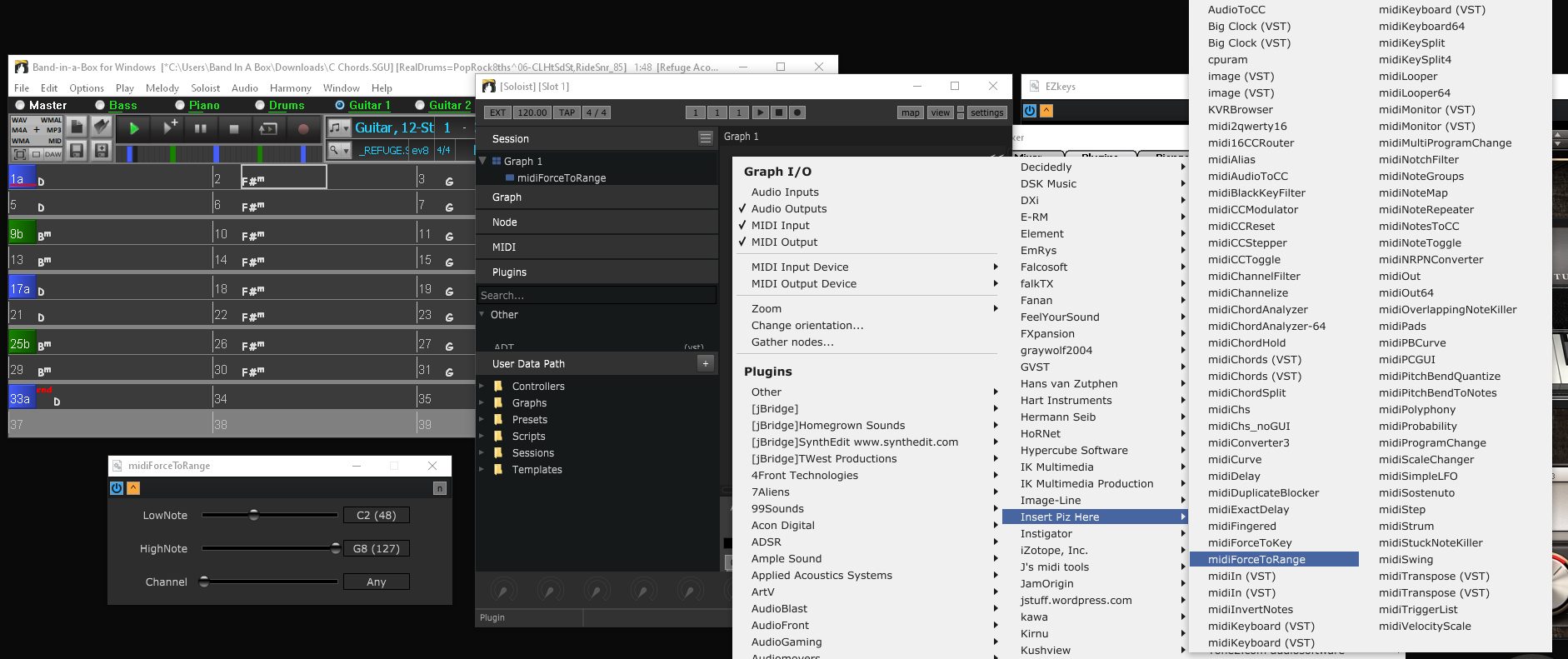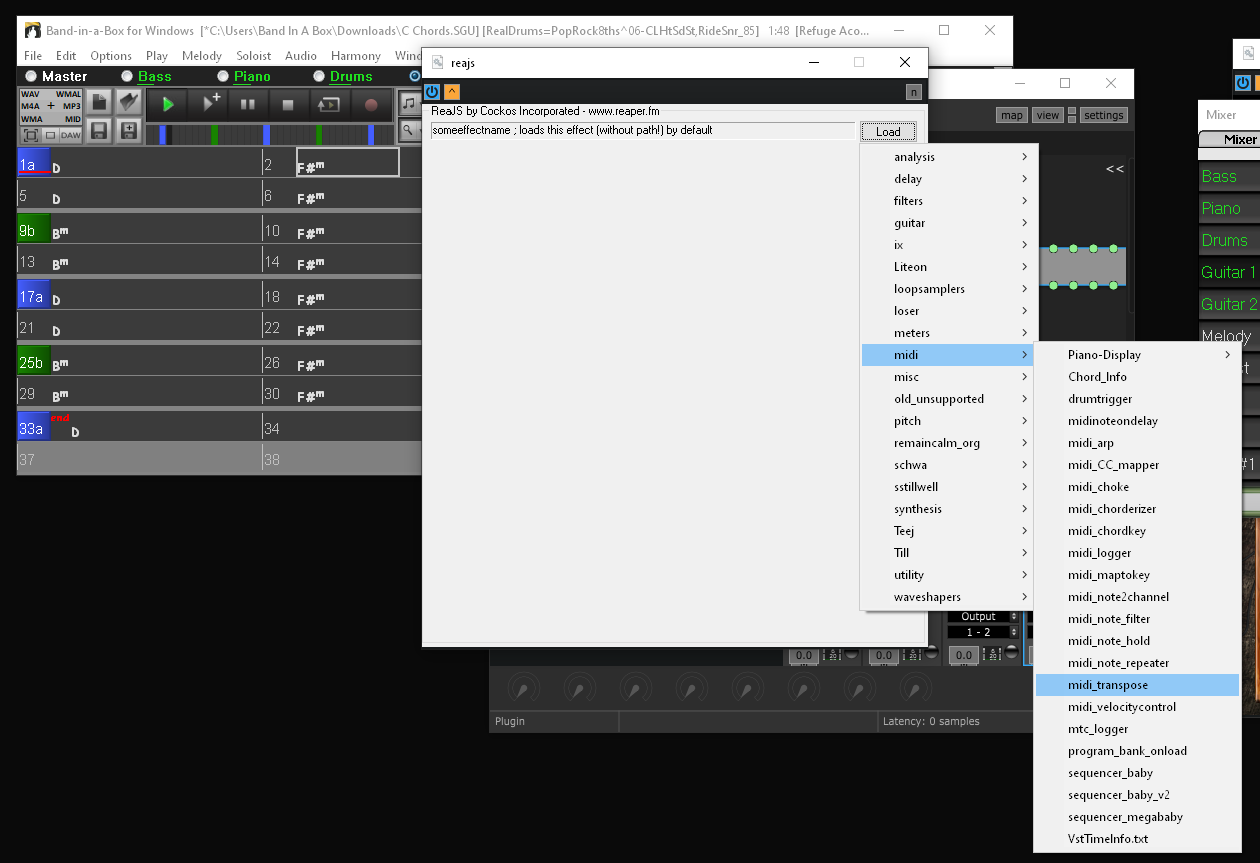Allow constraint of notes that may be played. - 03/21/22 11:47 AM
This wish arises because sometimes we would like to constrain notes to suit a particular instrument of VSTi.
It seems very likely that there is already some constraint of this kind withing BiaB as instruments already play in suitable ranges ... piano, trumpet, tenor Sax, violin/fiddle and so on. There are times when it would be useful for a user to set such a constraint, for example for an unconventional instrument or a particular mapping on a VSTi.
I suspect this might be best achieved on a per-track basis, though some kind of user-defined instrument template may be an alternative. I imagine in normal circumstances that such a constraint would be set by default for an instrument selected from MIDI or RealTrack, but may then be overridden by the user. I would also imagine it to apply only to auto-generation, not to be a constraint on notes that one might manually enter or edit.
Some examples of where the feature would be helpful:
Some instruments have a narrower or different range than typical for the general class of instrument. That's quite common with ethnic and early instruments. (e.g. Balafon, Crotales, Kora, Recorders, Zithers).
Some VST instruments are shifted by an octave (or two), often to bring expression controls into the left-hand on a keyboard. (This shift can be done by whole octaves using MIDI Channels).
There are ways to achieve these things manually or externally, e.g., by editing the notes manually or by post-processing MIDI, but there are attractions with a level of automation.
It seems very likely that there is already some constraint of this kind withing BiaB as instruments already play in suitable ranges ... piano, trumpet, tenor Sax, violin/fiddle and so on. There are times when it would be useful for a user to set such a constraint, for example for an unconventional instrument or a particular mapping on a VSTi.
I suspect this might be best achieved on a per-track basis, though some kind of user-defined instrument template may be an alternative. I imagine in normal circumstances that such a constraint would be set by default for an instrument selected from MIDI or RealTrack, but may then be overridden by the user. I would also imagine it to apply only to auto-generation, not to be a constraint on notes that one might manually enter or edit.
Some examples of where the feature would be helpful:
Some instruments have a narrower or different range than typical for the general class of instrument. That's quite common with ethnic and early instruments. (e.g. Balafon, Crotales, Kora, Recorders, Zithers).
Some VST instruments are shifted by an octave (or two), often to bring expression controls into the left-hand on a keyboard. (This shift can be done by whole octaves using MIDI Channels).
There are ways to achieve these things manually or externally, e.g., by editing the notes manually or by post-processing MIDI, but there are attractions with a level of automation.


